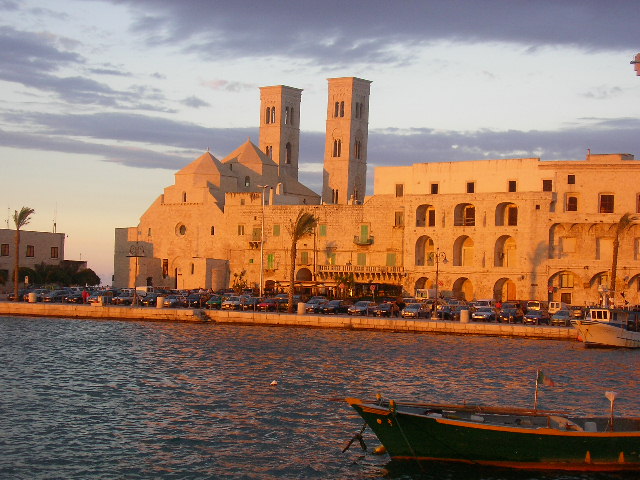
Molfetta, Cathedral of San Corrado –public domain-
The church, built on the edge of the old town to house the remains of Saint Conrad, who died in Puglia in 1154, stands close to the spectacular quay, as a landmark for people reaching Puglia from the sea.
It is not clear when it was exactly erected, probably at the end of the 12th century. The sacred building, in its uniform structure, embraces different architectural and decorative models: the longitudinal plan with aligned domes, very common in this region, combines harmoniously with a transalpine Norman style, as that adopted in the Basilica di San Nicola in Bari. The façade compact block is dominated by the imposing side bell towers, lightened by the effect of the mullioned windows through which the blue sky seems to pass.
The aligned domes in the Cathedral of Molfetta, externally concealed by pyramidal roofs – built in local stones, using the chiancarelle[1] technique stand out for their monumental nature and the fascinating light effects, created by these big white prisms that come to life due to the sky and sea reflections.

Molfetta, Cathedral of San Corrado, side elevation. (author: Dantes102 – Flickr, CC BY-SA 2.0, https://commons.wikimedia.org/w/index.php?curid=4744135)
The side walls are enlivened by a sequence of intersecting oriental style blind arches, which document the continuous relationships of the town with overseas lands.
In the interior, where Byzantine, Romanesque and Muslim elements harmoniously coexist, one has the feeling of being caught by the curvilinear space of the deep apse, the hemispheric domes above and vaults, which seem to enlarge the side walls creating a symphony of volumes that intersect and echo.
-
T. N.: Limestone slabs. ↑
